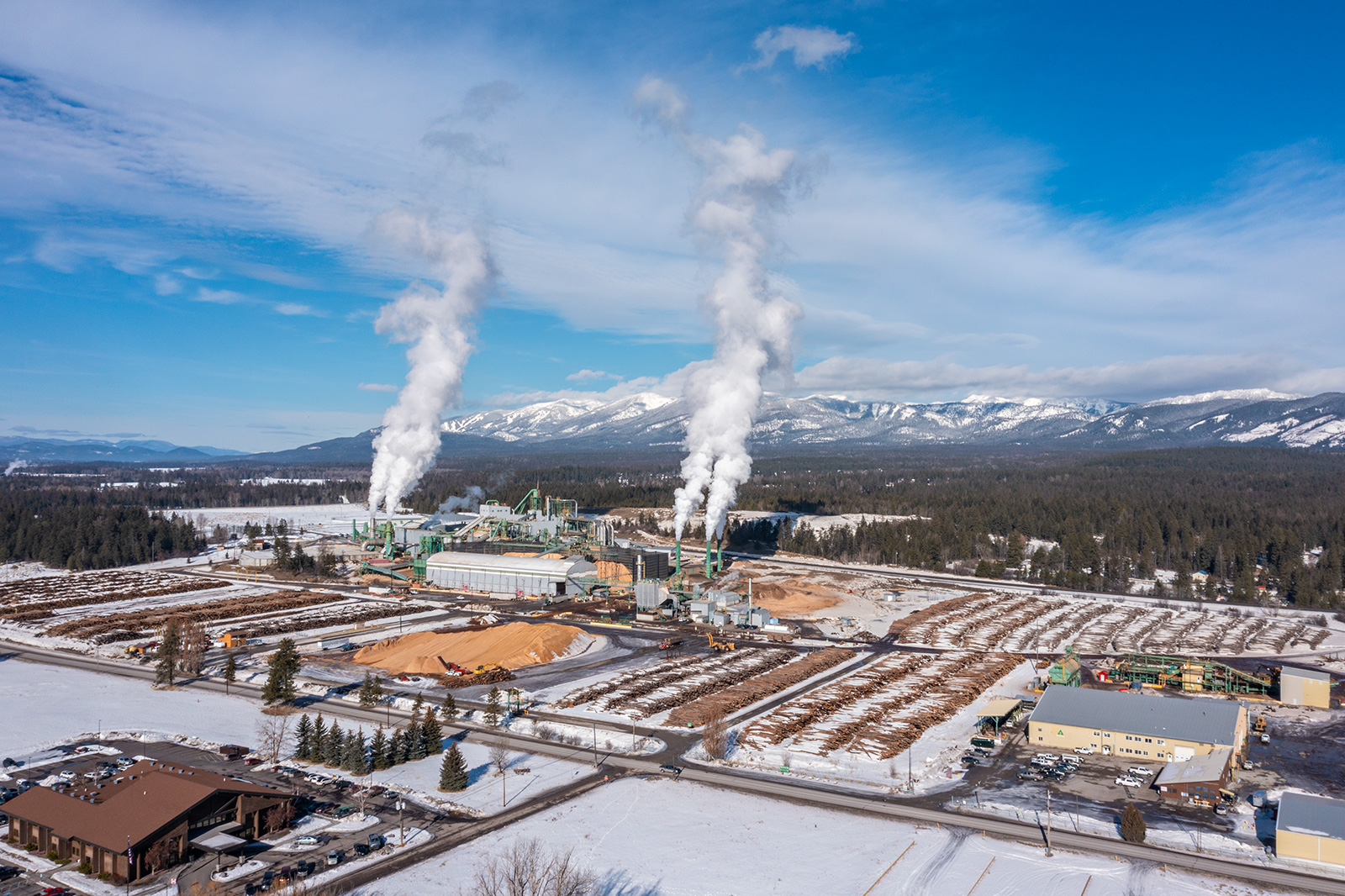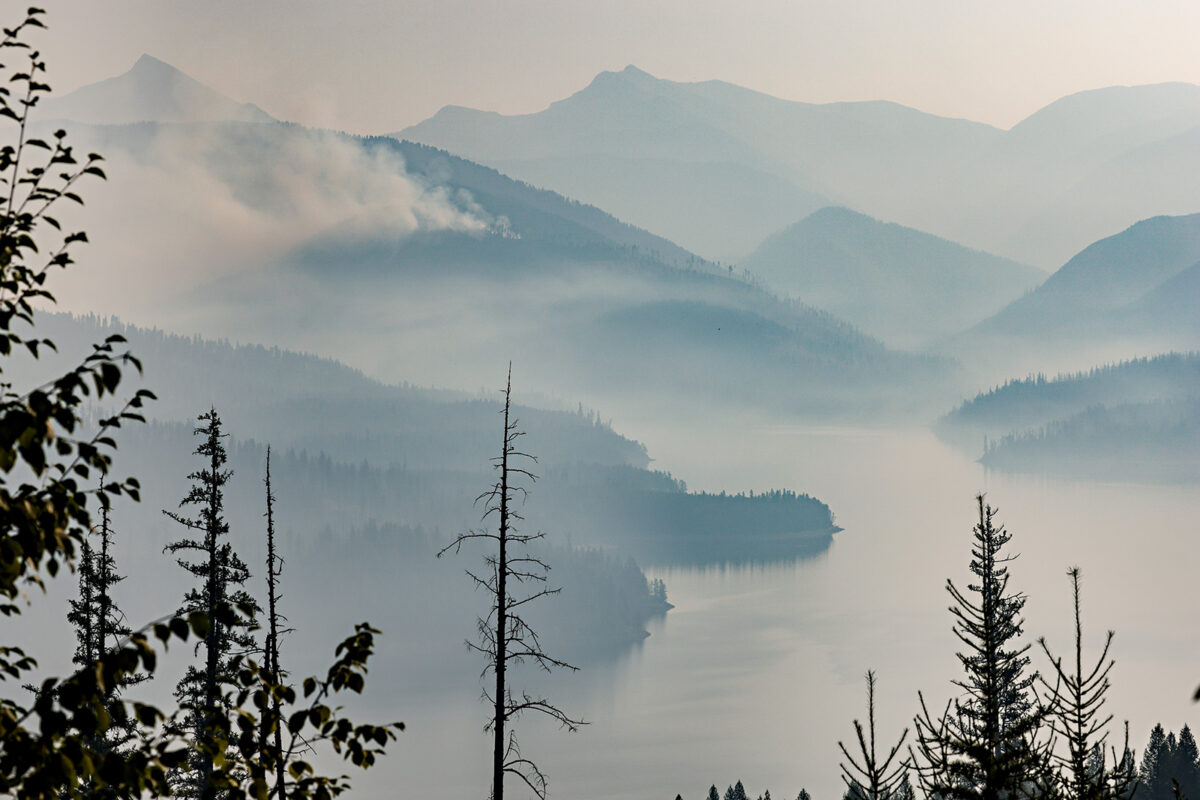Montana Receives $50 Million Grant for Climate Resiliency
The state was one of 25 entities selected by the U.S. Environmental Protection Agency to receive federal funding to implement projects to reduce greenhouse gas emissions
By Micah Drew
The state of Montana announced this week it will receive $50 million from the U.S. Environmental Protection Agency (EPA) to implement community-driven solutions to the climate crisis laid out in the Montana Pollution Reduction Plan.
Through the Climate Pollution Reduction Grants, part of the Inflation Reduction Act passed by the Biden administration in 2022, the EPA is investing $3.4 billion in 25 projects selected from among 300 applications across the country.
The Montana Department of Natural Resources and Conservation (DNRC) submitted a proposal for $49,769,891 to fund “The Montana Forest, Community and Working Landscapes Climate Resiliency Project,” which aims to improve forest management and expand urban and community forests, mitigate wildfires and coal seam fires and support local initiatives to improve soil health and reduce pollution from agriculture.
“Our guiding mission is ensuring all people in Montana have clean air to breathe, clean water to drink and the opportunity to live healthy lives,” Regional EPA Administrator KC Becker said in a press release. “These grants — unprecedented in their funding — bring us and Montanans closer to achieving these goals. The Montana [DNRC]’s climate resiliency projects will provide funding to improve soil health across the state and reduce pollution from agriculture through community-driven solutions and local initiatives developed by Montanans.”
The funding will be implemented by DNRC, along with the Montana Department of Agriculture and the Department of Environmental Quality (DEQ), across seven different measures — forest management and wildfire mitigation; urban and community forestry; coal seam fires; nonpoint source pollution; fertilizer use innovation; ranchland stewardship; and innovations in the cattle and beef industry.
“We’re known in Montana for our innovative spirit and our strong history of conservation,” Gov. Greg Gianforte said in a press release announcing the grant. “I’m grateful we worked together to secure this historic investment to improve the resilience of our forests, agriculture industry, and waterways through innovative, incentive-based projects.”
According to application materials, the forestry work will include reforestation efforts to plant 2.5 million seedlings to counter the significant forest loss in Montana from climate change and wildfires, and include expanding management of state forests to 8,000 acres to reduce tree density and mitigate wildfire risk. Another focus will be on urban forestry with a goal of increasing canopy coverage in up to 70 communities to increase biodiversity and forest health while further sequestering carbon. Funding will also be allocated to tribal communities to create new seasonal jobs focused on forest management and wildfire mitigation.
In northwest Montana, project implementation includes chipping and hauling 44,000 tons of slash to Weyerhaeuser’s medium-density fiberboard mill in Columbia Falls, allowing the mill to replace natural gas with biomass and reducing pollution normally released when slash is burned.
“As stewards of our natural resources, DNRC implements forest management that is vital to protect and restore ecosystems while building resiliency to drought and wildfire risk,” DNRC Director Amanda Kaster said. “These funds will bolster our established seedling and forest management programs, while also providing new resources to manage coal seam fires facing Eastern Montana.”
Burning coal seams in the Powder River Basin release greenhouse gas emissions and other harmful pollutants, decreasing air quality in many low-income and disadvantaged communities, and a portion of the funding is aimed at identifying and mitigating these underground, often unnoticed, fires that are often responsible for igniting wildfires in the area.
Funding will also be funneled into the agricultural industry to support family-sustaining ranches by providing land productivity and reducing land loss, as well as finding collaborative approaches for managing livestock to improve grazing management on ranchlands. The Department of Agriculture will implement nitrogen-based fertilizer use innovations that improve soil health and increase carbon capture in the soil. There is also a proposal to implement a feedlot innovation program to provide technical assistance and cost-share opportunities to implement animal waste management systems to improve efficiency and reduce the environmental impacts of the beef supply chain.

“Montana’s farmers and ranchers deserve so much credit for responsibly stewarding Montana’s agricultural landscapes, and we are very pleased the importance of producer led conservation practices are recognized,” Department of Agriculture Director Christy Clark said in a prepared statement. “The department, along with our industry partners, are eager participate in this effort to further the implementation of innovative ideas and new technology in agriculture.”
A final pillar of the application focuses on water quality and bolstering the resilience of Montana’s aquatic resources. Projects will look to reduce pollution and algal blooms from agricultural runoff by boosting existing state grant programs that fund carbon sequestration and nutrient pollution reductions.
“All Montanans know what it feels like to watch our big skies turn smoky during summer months,” DEQ Director Sonja Nowakowski stated in the press release. “I am excited to put this funding to work for Montana – to implement projects that will protect our most vulnerable residents from smoke and harmful algae, and help our communities continue to thrive.”

According to the EPA, the 25 selected projects are estimated to reduce greenhouse gas emissions by 148 million metric tons by 2030, and 971 million tons by 2050. Montana’s project is estimated to reduce carbon dioxide emissions by 1.9 million tons by 2030 and 15 million tons by 2050.
A second Montana application for the EPA funding aimed at upgrading energy infrastructure at schools across the state was not selected, frustrating the governor. “Our state agencies work diligently to serve Montanans, and ensure we maintain the best environments to live, work, and learn. Our states deserve better coordination from the federal government to best serve our communities and our students,” Gianforte stated in the news release.